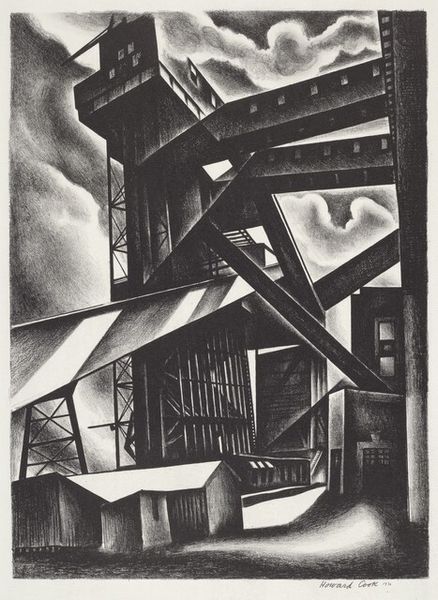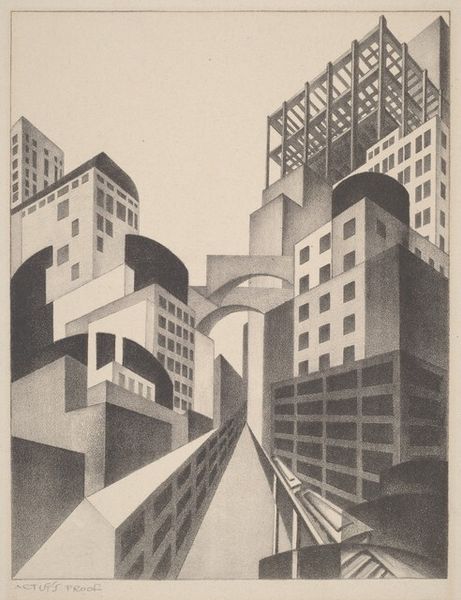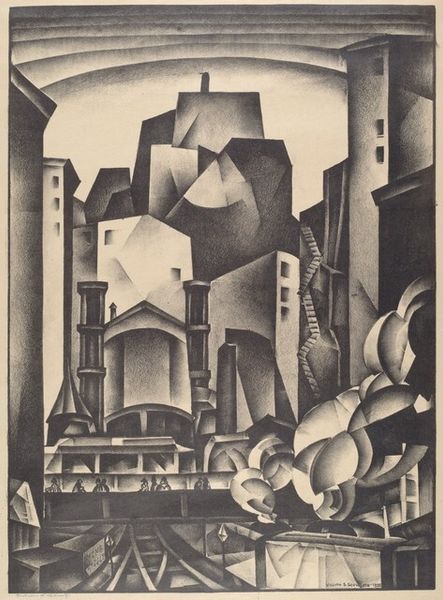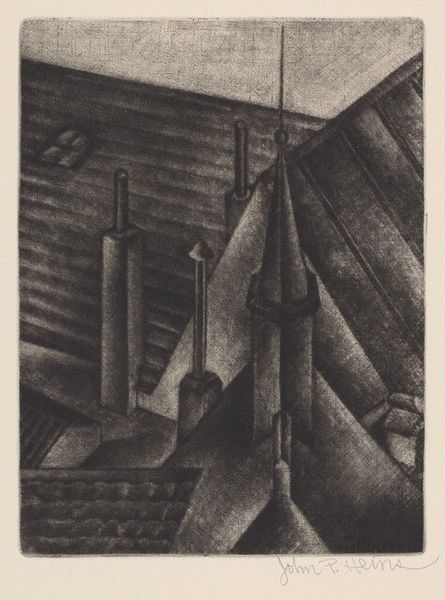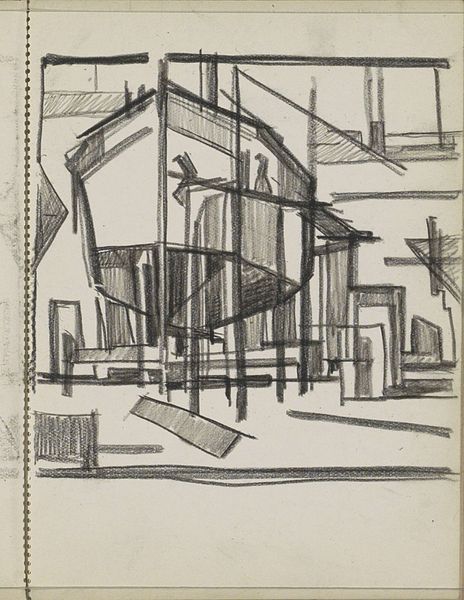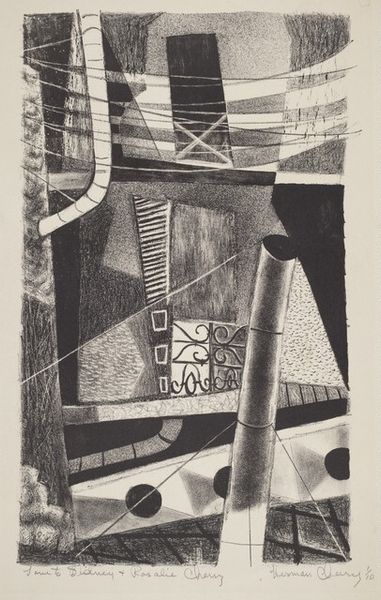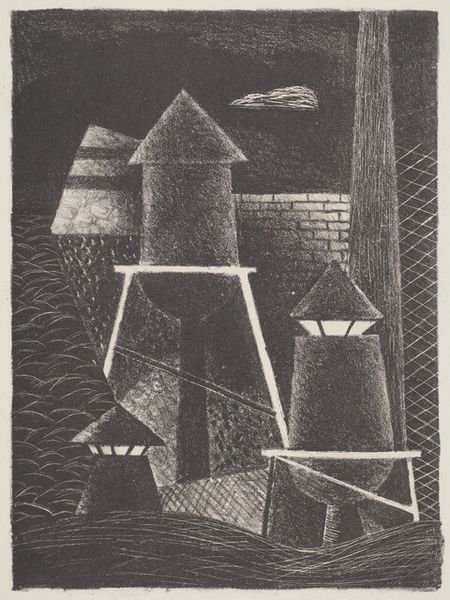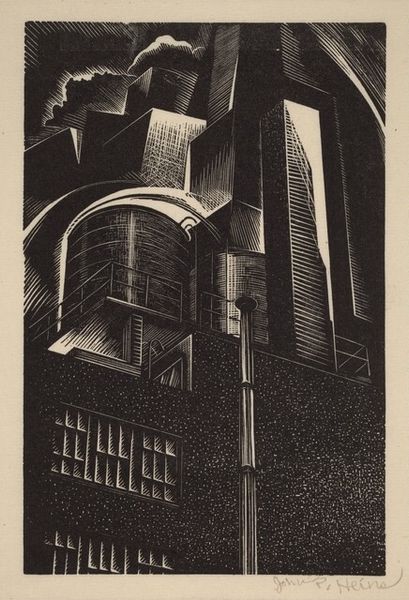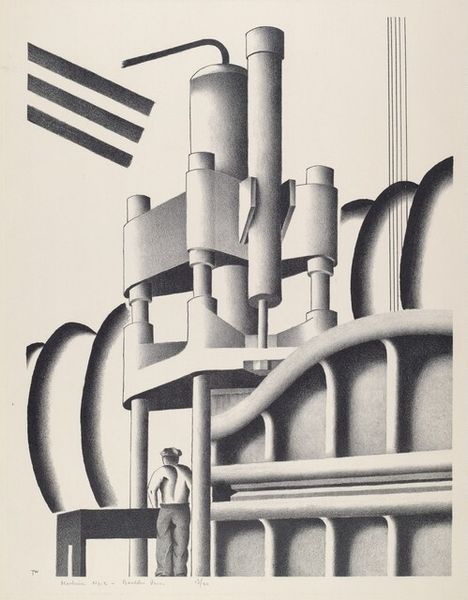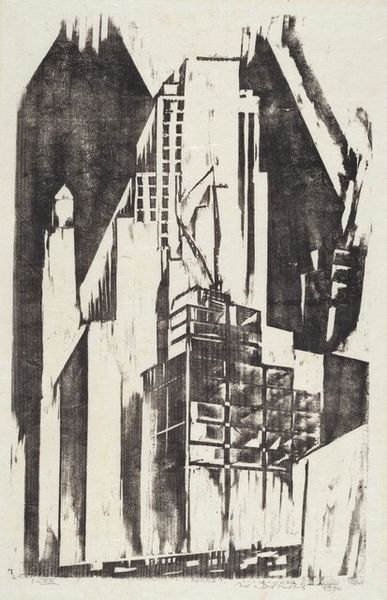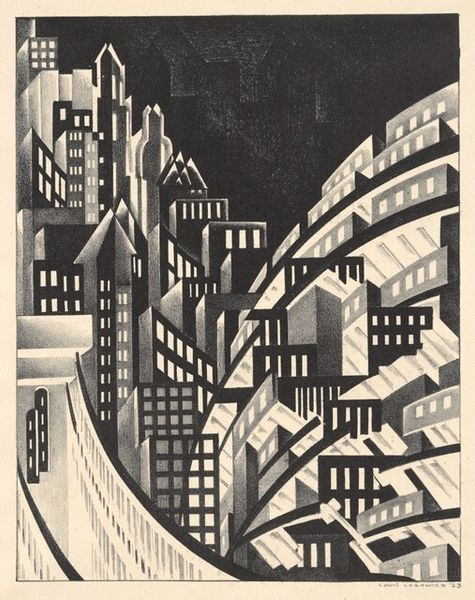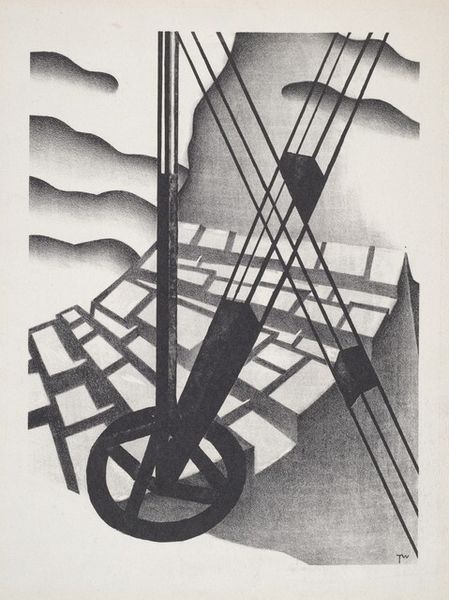
drawing, print, graphite
#
drawing
# print
#
geometric
#
graphite
#
cityscape
#
modernism
Dimensions: image: 40 × 30.2 cm (15 3/4 × 11 7/8 in.) sheet: 47.6 × 37.1 cm (18 3/4 × 14 5/8 in.)
Copyright: National Gallery of Art: CC0 1.0
Curator: Immediately striking. The angular lines, the dominating geometric forms... there's a mechanical, almost unsettling beauty here. Editor: Yes, quite! We're looking at "Powerplant," a print and drawing created around 1936 by Jolán Gross-Bettelheim. A cityscape rendered in graphite. What narratives can we extract from this singular work? Curator: The dominance of industry, undoubtedly. That looming structure immediately brings to mind narratives of power and the socio-political implications of modernization, especially given the historical context of the 1930s. It reflects an almost brutalist vision of urban space. Editor: Absolutely. Observe how the visual language pulls from the history of representing power through architecture – ziggurats, pyramids, the Tower of Babel – all condensed and reconfigured through a modern, industrial lens. These forms elicit cultural associations beyond their immediate representation. Curator: Exactly. The gendered aspects as well; the patriarchal symbolism inherent in towering structures reflecting dominance. I'd say this also reflects on Gross-Bettelheim’s own identity as a woman navigating this rapidly transforming, male-dominated sphere of industry and urban development. Was she celebrating the dawn of industry or critically assessing its social cost? Editor: Consider also the window. Framed so precisely and dwarfed, of course, by this vast structure. It creates a sense of confinement, suggesting, perhaps, that human scale is diminishing under the sheer weight of industrial progress. It becomes a window not to the outside world, but to the experience of modernity itself. Curator: A powerful suggestion. I wonder how the artist viewed their place in this system – complicit or critical, empowered or diminished? It feels like all of these contradictory impulses are present in the work. Editor: And isn’t that the beauty of visual symbols? How they transcend the boundaries of time and context to whisper echoes of a collective memory into our present awareness? Curator: It is, undeniably, the complexity that makes this a resonant and thought-provoking piece. One that forces us to consider not only what was but what still *is* in our relationships with industrial power and our lived environment. Editor: Indeed, a stark visual reminder that the architectural and industrial choices we make become part of the ongoing narrative we create for ourselves.
Comments
No comments
Be the first to comment and join the conversation on the ultimate creative platform.
